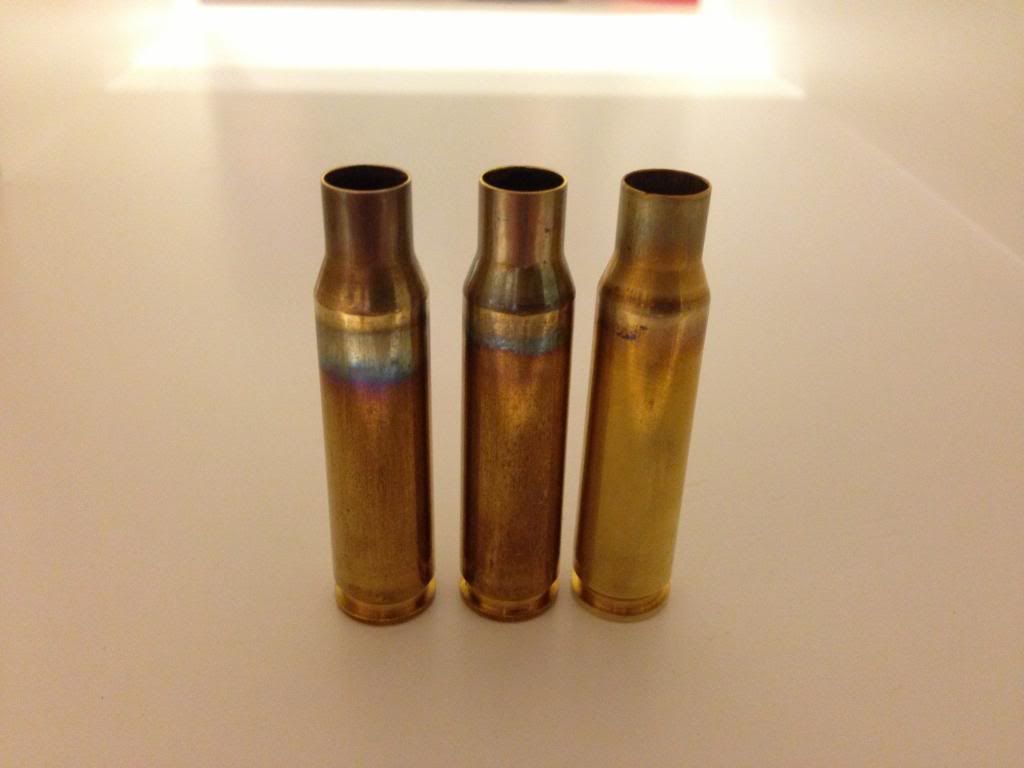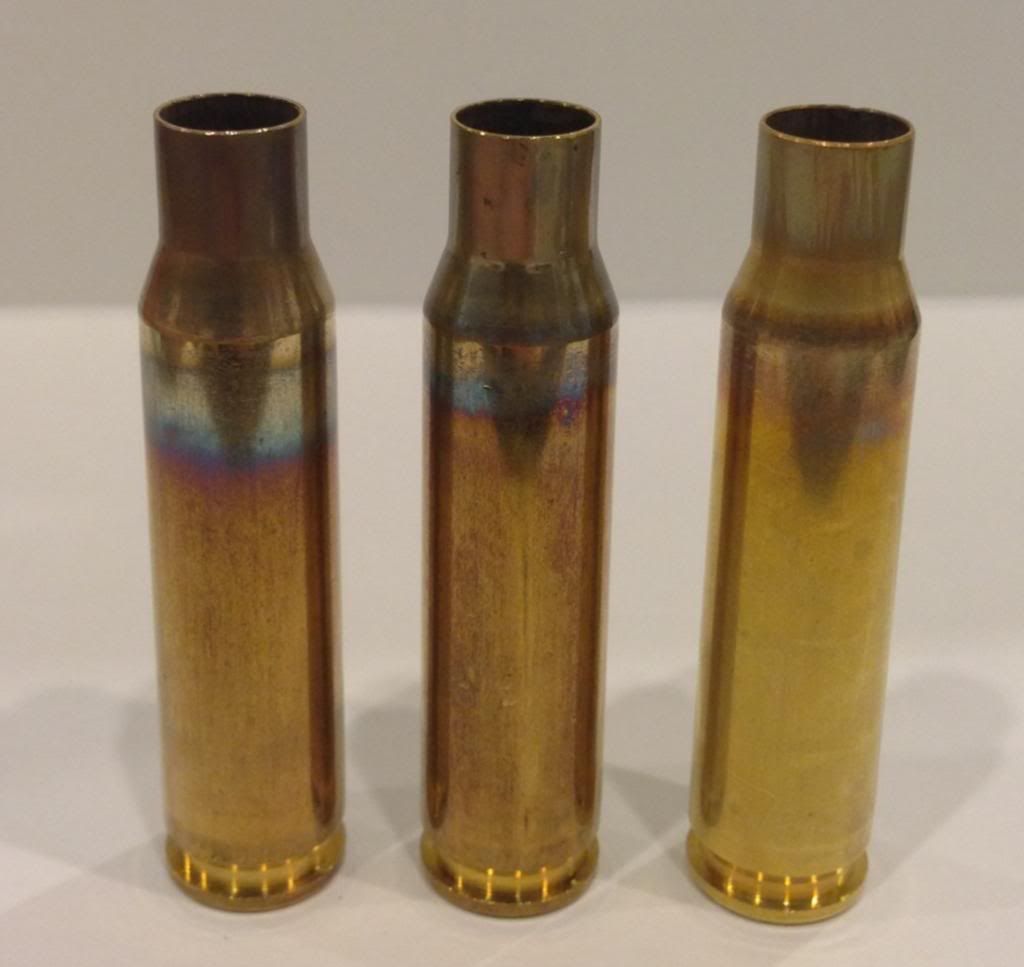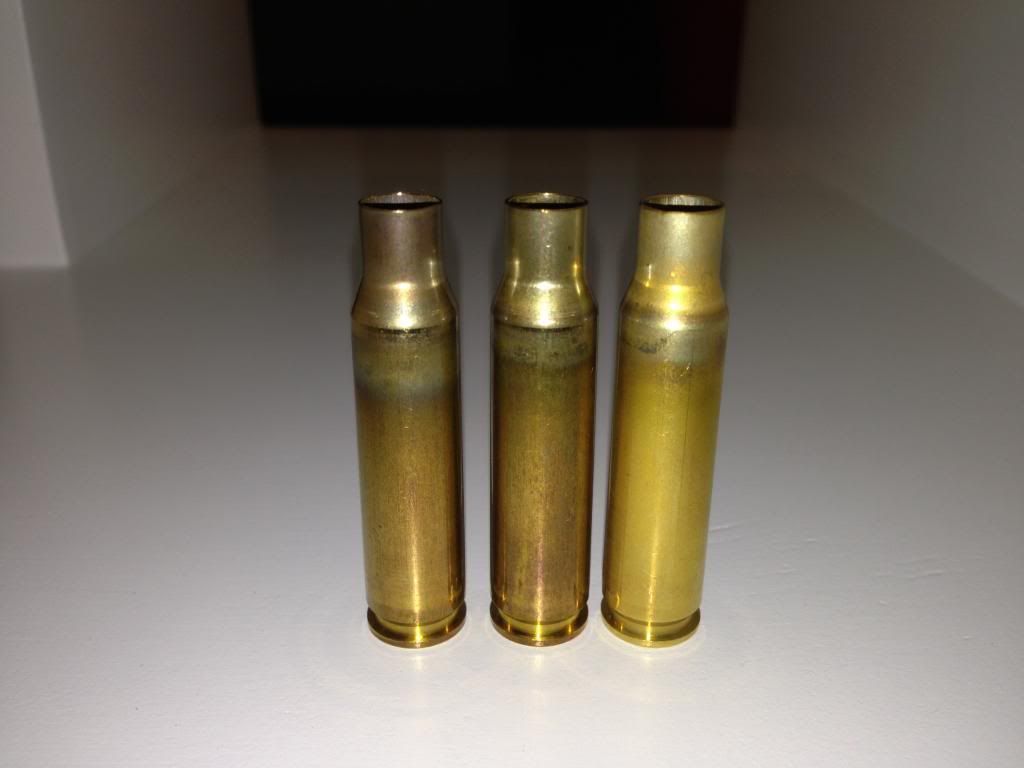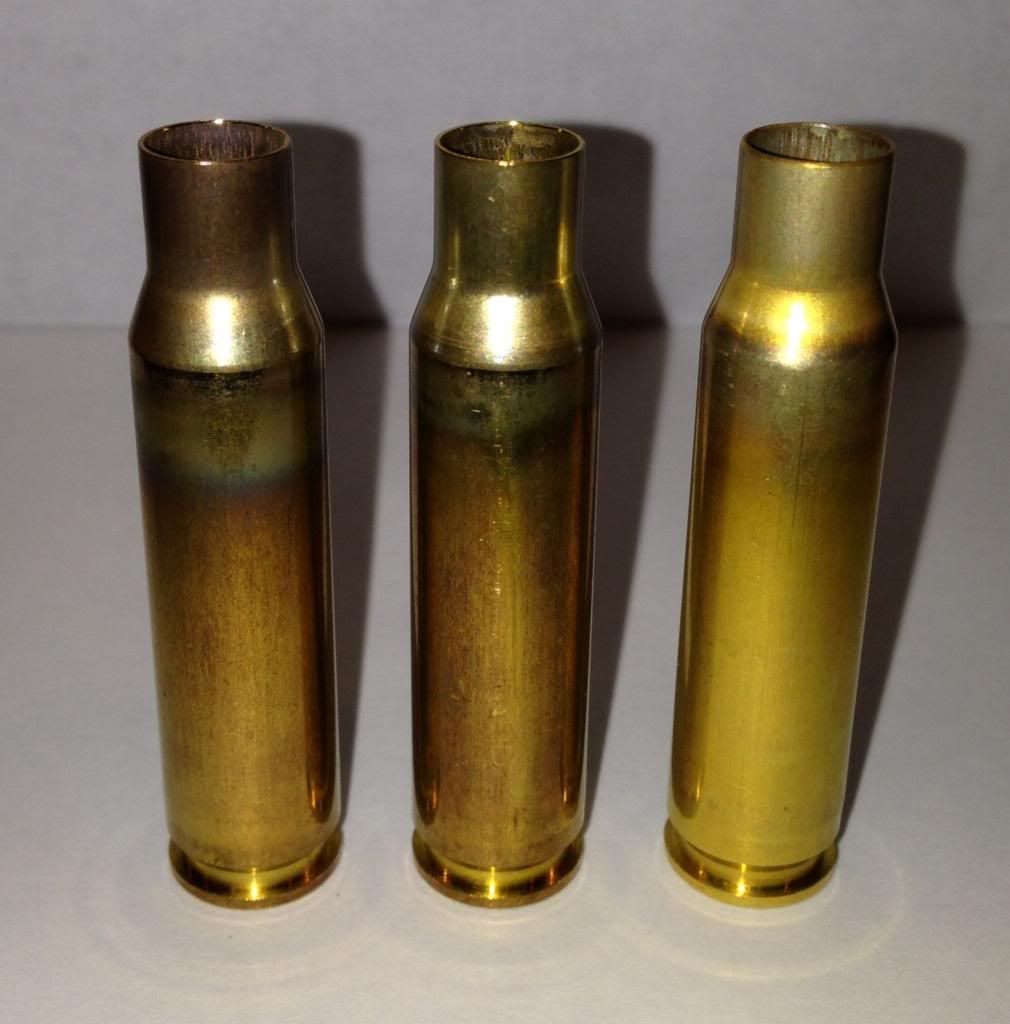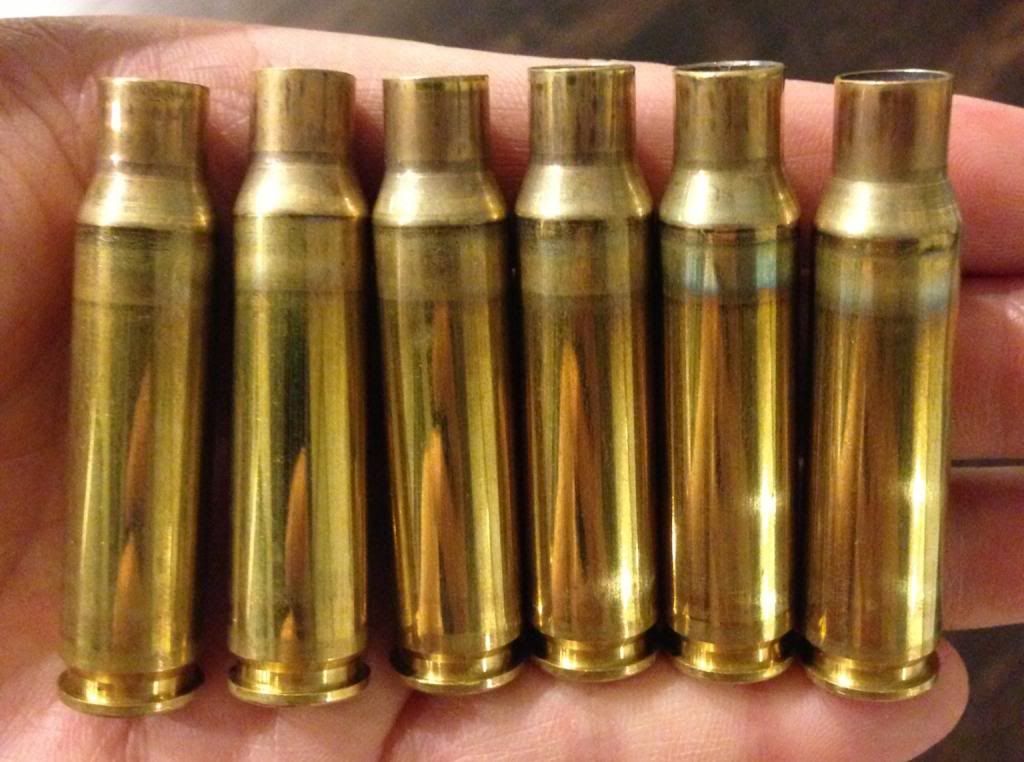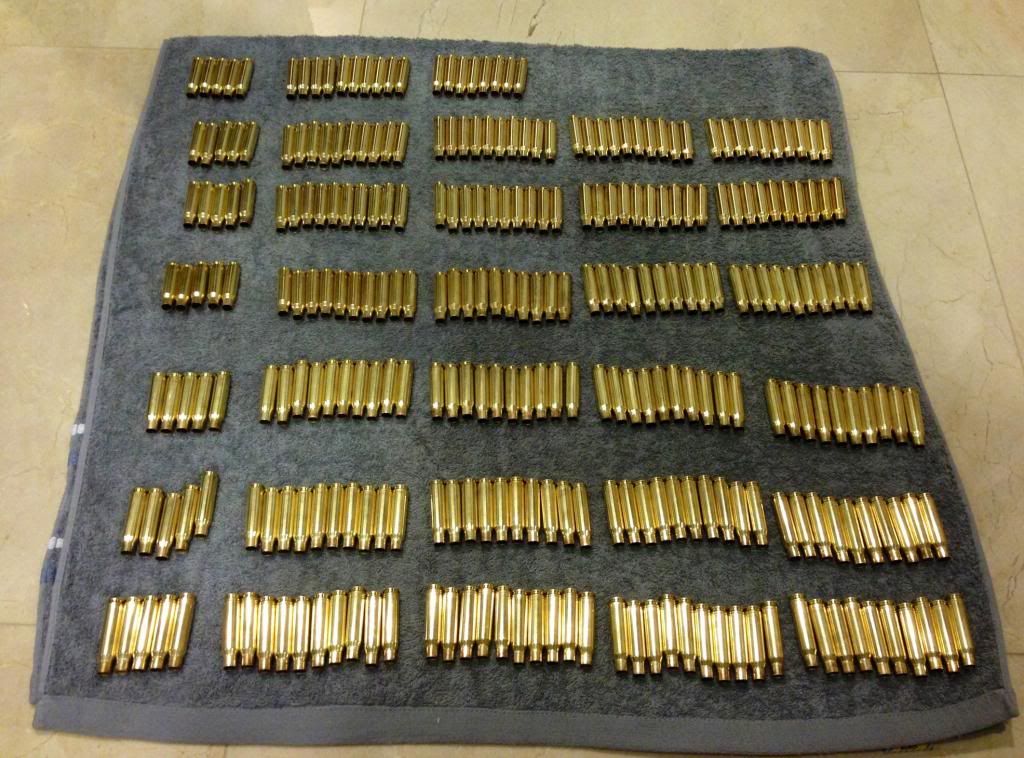Re: Annealing Brass (Photo)
from 6mmbr
Testing Cartridge Brass for Hardness and Softness
This is not a definitive test of case hardness; it is more of an illustration than anything else. It requires a pair of small Vise-Grips and a few bottle neck rifle cases in various conditions of use: a factory fresh empty case, two cases that have not split but have been fired many times, and a couple of extra cases to set the jaws of the Vice Grips.
Place one of the used cases base down in a shallow tray containing water up to the lower third of the case, and deliberately over-heat the case neck--bring it to a red heat.
Adjust the Vise-Grips until the jaws barely touch the case neck when they are fully closed. Then, Carefully adjust them to go a few thousands of an inch beyond that point. the jaws should close until you can just barely visibly detect that the case mouth is deformed when the Vise-Grips are closed.
Ordinary pliers are not good for this demonstration because it is too easy to go too far. Vise-Grips, on the other hand, have an adjustable limit to which they can be closed.
Squeeze the neck of the used, but un-annealed case. Note the pressure required. Also note that when the pressure is released, the case neck springs back to its original shape.
Squeeze the neck of the factory fresh case. Once again note that the case neck springs back to its original shape, and that it takes slightly less pressure to deform it than the un-annealed case.
Now, squeeze the annealed case. The pressure to deform it is markedly less and when it is released, the case mouth remains deformed--no spring.
One more test--stand the annealed case on a metal plate (no water over the base) and heat the upper half to a red heat. Hold the heat for a few seconds and then let it cool. Adjust the Vice-Grips so that they can put considerable squeeze on the head area and crush the annealed case. Now crush one of the normal used cases. The difference is dramatic. Don't test an over-annealed case in a gun just to see what happens--take my word for it, the results can be dangerous to life, limb and eye, not to mention the condition of the gun. Finally, crush all test cases so that they won't get mixed in with good brass
